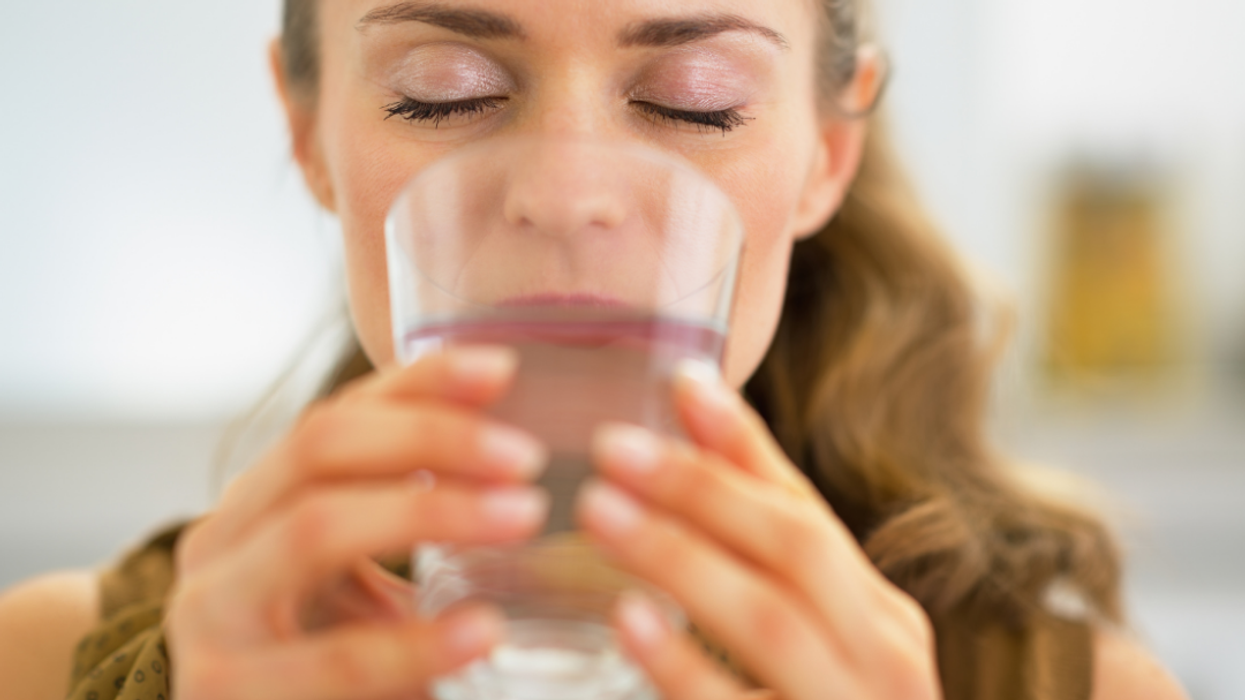You're drinking water wrong: Why doctors say temperature matters more than you think
You might be missing out on some serious health benefits.
Could you be more effective with your water intake?
Here’s something we all know but rarely think about: 75% of the human body is made up of water. Essentially, we’re water balloons with legs, or whatever the heck Flubber was. To maintain that internal reservoir, humans need to drink 15 cups of water (for men) and 11 cups of water (for women) daily. It doesn’t take a math whiz to realize that’s a lot of water. To put that into perspective, according to the Omni Calculator (a great online tool that determines a person’s total body water volume using a formula developed by Dr. P.E. Watson), beloved character actor Steve Buscemi is currently carrying around 83.74 pounds of water in his body, or approximately 10 gallons.
But what if you’ve been drinking water, that sweet elixir of life, all wrong? Or, at the very least, ineffectively? Just as every plant has its ideal growing conditions, according to doctors and medical professionals, the temperature of the water we drink matters a lot more than you might think.

Room-temperature, ice-cold and straight from the fridge, slightly warm for no reason at all: when it comes to drinking water, everyone has their own unique methods of getting the job done—but while we continue to chug our preferred water temperatures without question, we might be missing out on some serious health benefits—or even causing ourselves unnecessary discomfort.
Medical experts have discovered that water temperature, when used at the right time, can significantly improve your wellbeing, affecting everything from how we digest our food to how well we perform during workouts. All water hydrates, but the temperature at which you drink it can make all the difference.
Room-temperature water is your digestive system's best friend

When to drink
Good morning! Many dieticians and wellness experts recommend drinking room-temperature water (about 68°F) first thing in the morning to gently activate your gastrointestinal tract (It also promotes regular bowel movements, FYI). This gentle approach is often referred to as “Japanese water therapy,” and encourages sipping 4-5 glasses (about ¾-cup each) upon waking then waiting 45 minutes before breakfast. It’s also great for everyday hydration, since room-temperature water is often easier to gulp.
Why it works
"In Chinese medicine we advocate drinking warm water because of its effect on the digestive system," Dr. Jill Blakeway, a licensed doctor of acupuncture and Chinese medicine explains. “Drinking cold water can congeal the fats in food and because of that can make the digestive system sluggish." Your body absorbs room-temperature water more easily, causing minimal disruption to the digestive system, making it the go-to option for sensitive stomachs.
Ice-cold water is perfect for workouts and hot days

When to drink
This one is for the athletes and fitness gurus: Cold water (around 41°F from the fridge or 60°F from the tap) is your new best friend. Like a refreshing summer breeze, cold water has a natural way of cooling the body down during or after an exercise. It also gives your metabolism a tiny boost: according to research, your body expends about five calories per ounce of ice while warming the water to body temperature.
Why it works
Studies show that drinking cold water triggers a special reflex that helps you to stop sweating sooner, effectively lowering your core temperature and enhancing overall performance. “It turns out that sweating stops before fluid can completely be incorporated into the body,” says gastroenterologist Dr. Brian Weiner. “There’s some kind of reflex that acknowledges liquid intake, and studies have shown that it kicks in more at the cold tap water level.”
Hot water soothes what ails you

When to drink
Hot water (130-160°F) can be incredibly soothing when you’re under the weather. So, if you’re feeling congested or battling a sore throat, a nice mug of hot water might be just what the doctor ordered. A 2008 study found that hot drinks work like a natural remedy, providing quick, lasting relief from runny noses, coughing, sore throats, and fatigue.
Why it works
Like a warm summer rain, hot water creates steam that helps clear sinus congestion, while its pacifying warmth relaxes the gastrointestinal and digestive muscles. In fact, a small study showed that warm water worked wonders for patients recovering from surgery, improving their comfort and digestive health. Warm or hot water can also literally melt away stress, as long as temperatures are kept comfortably warm: water above 160°F can scald your esophagus or damage your taste buds.
When to avoid certain water temperatures
While most doctors agree that drinking enough water is far more important than the temperature, there are specific circumstances to keep in mind:

- Migraines. Do not drink cold water! Research from 2001 found that the refreshing drink can trigger—or even exacerbate—headaches in those who are already prone to them.
- Achalasia. If your esophagus is compromised, cold water can worsen symptoms. Try swapping in warm water instead, which can help soothe and relax the lower esophageal sphincter.
- Hot, sweaty days. Surprisingly, despite what old wives’ tales might say, warm water can actually make you feel less thirsty, which registered dietician Vanessa Rissetto warns "can be dangerous on days when your body is losing water through sweating to try to keep cool."
We all know drinking water is important, but just as a garden thrives with the right care at the right time, you can optimize and customize that all-essential water you drink throughout the day. Whether that’s out of a Stanley tumbler, Owala water bottle, or Yeti flask, is up to you.
This article originally appeared in May.
- 16 people share the weird 'quirk' their pet does that no one believes ›
- A movie theater handed out free water that was impossible to open. Why? ›
- 6 surprising, scientifically-backed ways to cool down quickly during a heat wave ›
- This powder is cleaning drinking water all over the world and transforming lives ›
- Doctor says you should be washing your water bottle this often - Upworthy ›
